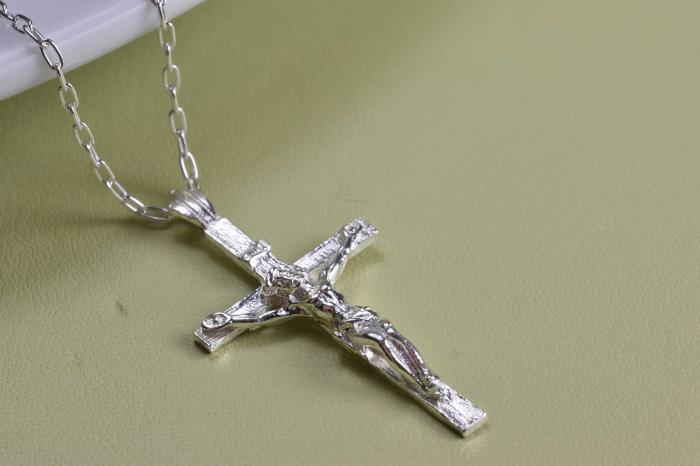Making a sterling silver cross pendant can be a rewarding and enjoyable project. Whether you want to create a meaningful piece of jewelry for yourself or a heartfelt gift for someone special, crafting a cross pendant from sterling silver allows for creativity and personalization. This article will guide you through the steps, tools, and techniques needed to create sterling silver cross pendant.
Understanding Sterling Silver
Sterling silver is an alloy made up of 92.5% silver and 7.5% other metals, usually copper. This composition gives sterling silver its strength while retaining the beauty of silver. Unlike pure silver, which is soft and malleable, sterling silver is durable and suitable for jewelry making. Before starting your project, familiarize yourself with the properties of sterling silver.
Tools and Materials Needed
To make a sterling silver cross pendant, gather the following tools and materials:
Sterling Silver Sheet or Wire: Choose a thickness based on your design. A 22-gauge sheet is a good starting point.
Saw and Saw Blade: A jewelry saw will help you cut the silver into the desired shape.
File Set: Use files to smooth edges and refine the shape of the cross.
Drill: A drill with small bits is useful for creating holes for jump rings or chains.
Soldering Kit: This includes a soldering iron, solder, and flux for joining pieces of silver.
Polishing Tools: Use a polishing cloth, tumbler, or a polishing compound to finish your pendant.
Pencil and Paper: For sketching your design.
Having these tools and materials ready will make the process smoother.
Designing Your Cross Pendant
Start by sketching your cross pendant design on paper. Consider the size, style, and any additional embellishments. Common designs include simple crosses, ornate designs with curves, or even engraved patterns.
Once you have a design you like, transfer it to your silver sheet or wire. Use a pencil to draw the outline. If you are using a silver sheet, ensure the design is large enough to accommodate the desired finish and details.
Cutting the Silver
Using your jewelry saw, carefully cut along the outline of your cross design. Make slow, controlled movements to ensure clean edges. Take your time and adjust your grip to avoid putting too much pressure on the silver, which could cause it to bend or break.
After cutting, use files to smooth any rough edges. Start with a coarse file and gradually move to finer files for a polished finish. This step is essential to avoid sharp edges that could be uncomfortable when worn.
Drilling Holes
If your design includes a hole for a jump ring or chain, use a drill to create it. Mark the location where you want the hole to be, then drill carefully. Use a small bit that is suitable for the thickness of your silver.
Make sure to support the piece while drilling to prevent it from bending or breaking. Clean up any burrs or rough edges around the hole with a file.
Soldering Pieces Together
If your design includes multiple layers or embellishments, soldering will be necessary. First, clean the surfaces to be joined with a file or a cloth. This will help the solder adhere properly.
Apply flux to the areas you want to solder. Then, position the pieces together and heat them with a soldering iron.
Add solder to the seam and allow it to melt and flow into the joint. Hold the pieces in place until the solder cools.
After soldering, file any excess solder to create a smooth surface.
Finishing Touches
Once you have completed the main structure of your pendant, it’s time to focus on the finishing touches.
Begin by polishing the surface to remove any scratches or marks from the cutting and filing process. Use a polishing cloth or a tumbler for a brilliant shine.
You can also consider adding texture or patterns to your cross for added character. Use stamps or texture plates to create unique designs.
Attaching a Jump Ring
To complete your cross pendant, you will need to attach a jump ring.
Use a pair of pliers to open the jump ring. Slide it through the hole you drilled earlier and close it securely.
This jump ring will allow you to connect the pendant to a chain or cord for wearing.
Caring for Your Sterling Silver Pendant
Once your cross pendant is complete, proper care will ensure it remains beautiful.
Sterling silver can tarnish over time due to exposure to air and moisture. To prevent tarnishing, store your pendant in a dry, airtight container when not in use.
You can clean it with a polishing cloth designed for silver. Avoid using harsh chemicals or abrasive materials, as these can damage the finish.
See also: What Does a Cross Pendant Symbolise?
Conclusion
Creating a sterling silver cross pendant is a fulfilling and creative endeavor. From designing and cutting to soldering and finishing, each step allows you to express your individuality.
By following the steps outlined in this article, you can craft a meaningful piece that holds personal significance or serves as a cherished gift.
Whether you are an experienced jeweler or a beginner, making your own sterling silver cross pendant can be a rewarding experience.
Related topics:

